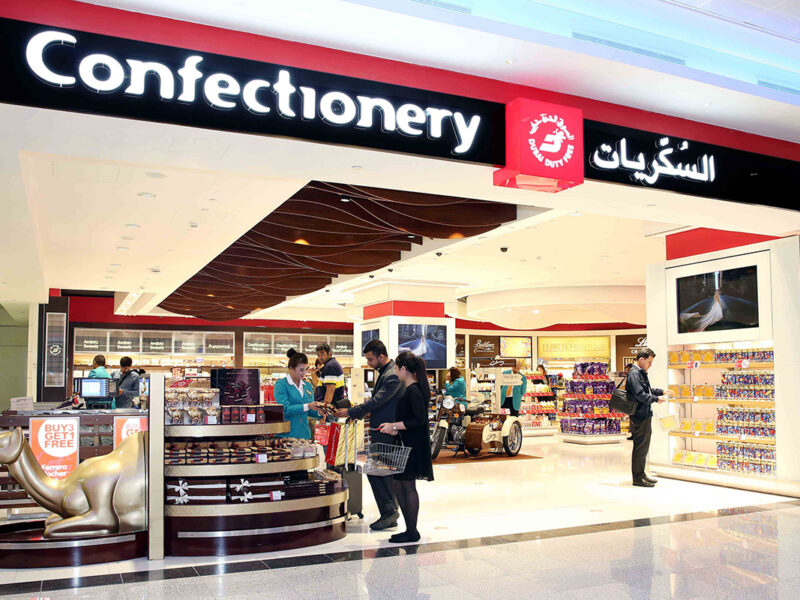Imagine a future without warehouses, in which items – ranging from vintage car parts to consumer goods and even dental implants – are swiftly 3D-printed and shipped on demand when needed. This dramatic disruption to the traditional logistics supply chain is just around the corner, and has the potential to add as much as $3bn to the UAE’s economy, according to Fahmi Al Shawwa, CEO of the Immensa Technology Labs, which in 2016 launched the UAE’s first dedicated 3D printing facility.
In an interview with Arabian Business, Al Shawwa says that the world is only just beginning to understand the enormous economic implications of 3D printing in the manufacturing and inventory sectors, particularly for Dubai. “The city has a very clear advantage in that it is already the regional re-export and logistics hub for a lot of multinationals,” he says.
On demand, and over here
Dubai’s prime location and well-oiled logistics networks provide a “fantastic opportunity” to transform the emirate into a leading centre for 3D printing, according to Al Shawwa. In this scenario, a 3D modelling programme is used to create a digital design, after which a 3D printer lays down layer after layer of material to create the object. Materials can range from plastics and metals to sandstone, wood or even porcelain.
According to Al Shawwa, 3D printing facilities will lead to the decline of the warehousing industry, as companies shift towards a model where goods are manufactured as needed, rather than being kept in stock. Once digital inventories are created, warehousing facilities can largely be replaced by 3D printing facilities. And this is not some far-off dream, but rather “a very tangible and achievable goal,” says Al Shawwa.
The potential economic benefits, Al Shawwa notes, are vast. If even five percent of the UAE’s inventory – which Al Shawwa estimates at between $24bn and $43bn – is captured by 3D printing, it creates a market opportunity of between $1.2bn and $2.15bn.

Al Shawwa says Immensa Technology Labs is passionate about 3D printing, design and manufacturing
“This is a key point of where 3D printing is going to change everyone’s life in the next few years,” he notes.
“When we go into direct manufacturing and digitising, you’ll get to a point where if you want a spare part, you’ll go to your agency here and they’ll go online to get the design and then print it. You’ll pick it up the next day, since it won’t have to be shipped from anywhere.”
This sort of on-demand 3D printing, Al Shawwa believes, will be “quite common” in the next three to five years. Immensa, which 3D prints a wide variety of items for companies in different sectors, such as prosthetics, construction materials and drone parts, is already working with a number of local companies to digitise their inventories and eliminate the often costly need for them to keep items in stock.
“What we’re doing in the physical world is similar to what has already been done for documents that have been digitised,” he says. “I can go to a company and tell them that, for example, I can digitise 10 percent of their AED200m in inventory. That’s AED20m worth of products you don’t have to carry anymore. You’ve saved on logistics and you’ve saved on warehousing, because the minute you need something, I can produce it for you.”
As an example of the possibilities, Al Shawwa points to Daimler, which in August announced that it 3D printed its first metal replacement part, a thermostat cover for older model Mercedes Benz trucks and Unimog utility vehicles. (The company began 3D printing plastic parts the previous year). Daimler believes that this will have a number of benefits, such as eliminating the need for large stocks of parts to be kept and for production facilities and tools to be preserved and maintained for years.
Al Shawwa says the same principles will contribute positively to GDP growth over here. “Dubai has the objective to increase its manufacturing sector’s contribution from nine or 10 percent of GDP up to 25 percent. A linear expansion might be challenging, since this isn’t an industrial nation; you don’t have 100 million people [that would allow] massive growth,” he notes. “But by transforming from static warehousing and logistics to an additive manufacturing hub, you’ve shifted some of the value in that chain coming from abroad to it being local.”

3D printing enables products to be customised according to specific requirements
He uses the example of a notional $10 product to explain how this works in practice. “Let’s assume you’re manufacturing it in Germany or China for $7. Shipping is another one or two dollars, so it comes here having already cost $9. You’re warehousing and selling it, and Dubai is benefitting by getting 20 percent of that value chain through logistics, warehousing and re-exporting it. But if you could have it assembled in Dubai – you don’t even necessarily have to manufacture it fully – you’ve increased that part of the pie from 20 percent of the $10 to maybe 45 percent. The multiplying effect will be huge.”
Think of the implications for Jebel Ali Free Zone, where the more than 85,700 sq m of warehouse space could be turned into value-producing 3D printing hubs, and there is clearly a case for transformation change to Dubai’s longstanding role as a hub for goods and services.
Al Shawwa’s thoughts are echoed by Roberto Alunni, a Dubai-based senior research manager at market intelligence firm IDC.
“While at present the costs of mass producing consumer goods in low cost locations and shipping them to markets across the globe still makes sense for a variety of durable and non-durable goods, the rapid advances in the field of 3D print technology means that we are at a point of inflection where that will change in the short to medium term,” he says, adding that “we are very close” to making it economically viable to print sufficient quantities of finished goods on demand.
Changes to shipping and retail
If relatively simple goods such as spare parts can be printed locally, Alunni believes that global investment into shipping and inventory management will decrease as companies re-evaluate whether the price of shipping goods from abroad remains the more economical option. In Alunni’s opinion, these sectors will become “more specialised” and will carry “more complex or finished goods, where skilled craftsmanship is still required to assemble the final product, or a premium is attached to it, such as luxury goods like a Ferrari.
Additionally, Alunni says that the ability to print items on demand will change the way customers interact with vendors and brands.
“The market will shift towards more customised solutions for each end user, meaning retail models will need to change. A store will no longer carry large inventory in every size, but will be able to offer custom products for each customer.

Daimler said customers can now order a double-digit number of parts for Mercedes-Benz trucks out of the 3D printer in any desired quantity
This will not be the only aspect to change. The sales assistant role will be to provide technical expertise to the end user. Dubai, Alunni notes, will need to adapt its retail offerings to ensure it remains among the top global destinations for retail shopping. “This will bring its own challenges,” he says.
Although this shift is still “some time away”, Alunni points to Nike and Adidas who have both experimented with 3D printed shoes. If the technology reaches a point where their stores are equipped with 3D printers that can print customised footwear in a matter of hours, then staff will have to be trained to operate the scanners and printers. There will also need to be separate areas for instore printers, with the necessary power supply and cooling systems.
A hub for 3D healthcare
While 3D printing is being adopted by the aerospace, defence and construction sectors in the UAE, some of the fastest progress is in the healthcare sector.
“This will be one of the areas which will have the most impact on people’s lives, I think, in both social and economic terms,” says Alunni.
Among the local companies involved in 3D printing for healthcare is the Jebel Ali-based and Emirati-owned Sinterex. In January 2017, Sinterex teamed up with Middle East Dental Laboratory, to produce the first 3D-printed dental implant bridges manufactured in the UAE. Since then, it has produced over 2,000 customised implants for patients in the region.
According to Julian Callanan, Sinterex’s managing director, Dubai’s place as a global logistics hub helps facilitate the spread of 3D printed dental products in other countries.
“We don’t take any physical designs or models. Everything we do is digitised. A dental lab in Bahrain or Pakistan sends us their design [which are based on 3D scans of a patient’s teeth], we do the production, and send it back to them,” he explains. “From Dubai we are connected to the world, and especially to the region. I can get a product to a customer in Pakistan in the same time it takes to get it to Abu Dhabi.”

Dubai Ruler Sheikh Mohammed said 3D technology will create added economic value and benefits worth billions of dollars in the coming period
The business opportunities this connectivity provides, Callanan adds, are enormous. “Pakistan is a market of 200 million people. The UAE is a market of 10 to 12 million people. The comparative opportunity is very stark.”
Nowhere are the opportunities for 3D printing as clear as they are in Dubai, whose government has embarked on an ambitious 3D printing strategy in which everything from construction materials to toys and even organs will be 3D printed by 2025. The opportunities are perhaps summed up by Sheikh Mohammed Bin Rashid Al Maktoum, Vice President and Prime Minister of the United Arab Emirates, and ruler of Dubai, who said: “The future does not wait for those who hesitate and slow down. The next stage requires us to act fast and utilise the opportunities.”
“This technology will create added economic value and benefits worth billions of dollars during the coming period,” he added. “We should have a share in this growing global market.”
With the local 3D printing market expected to be worth over AED7.5bn as soon as 2025, the future of Dubai’s status as a key hub of the world’s 3D printing scene looks bright.









